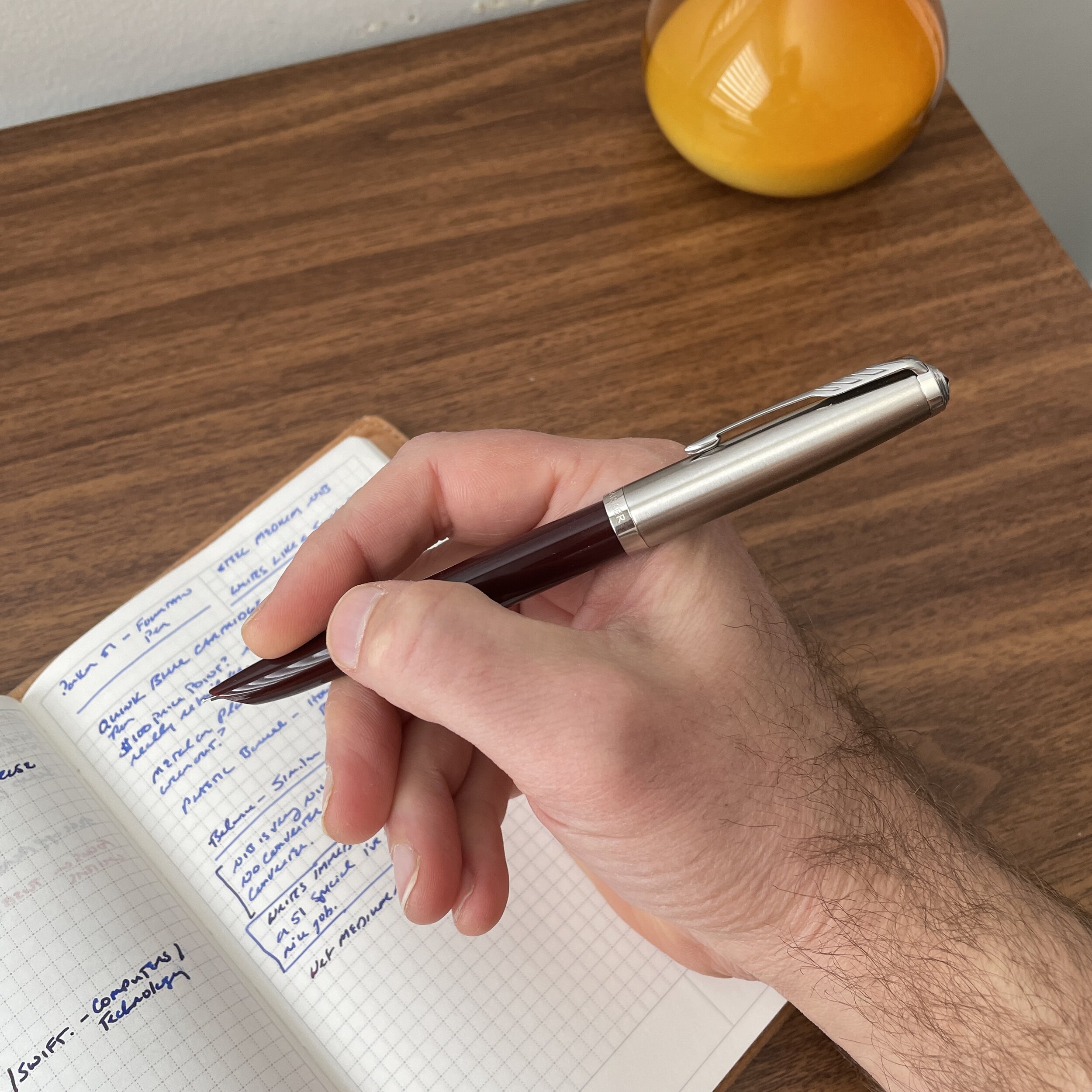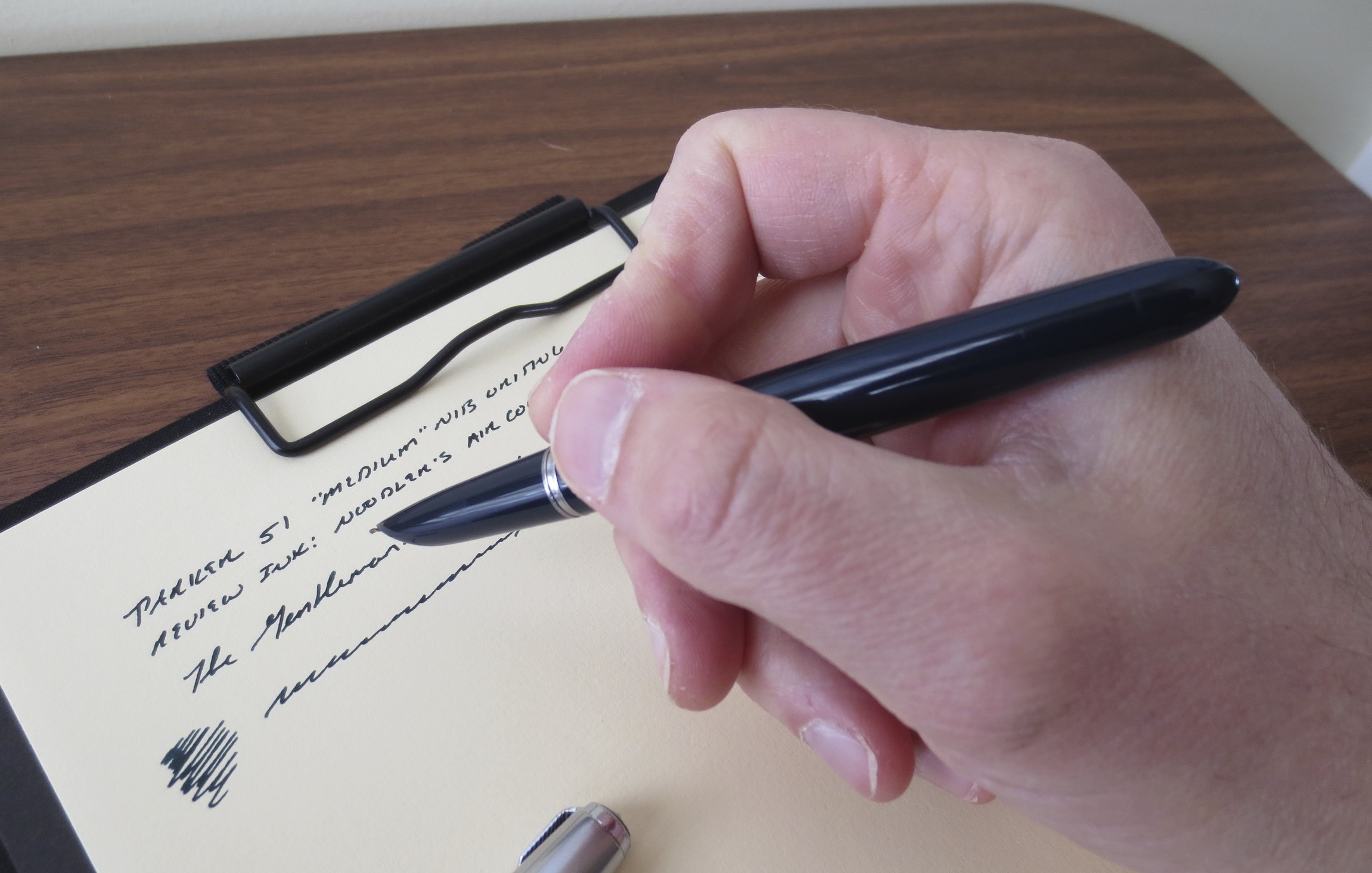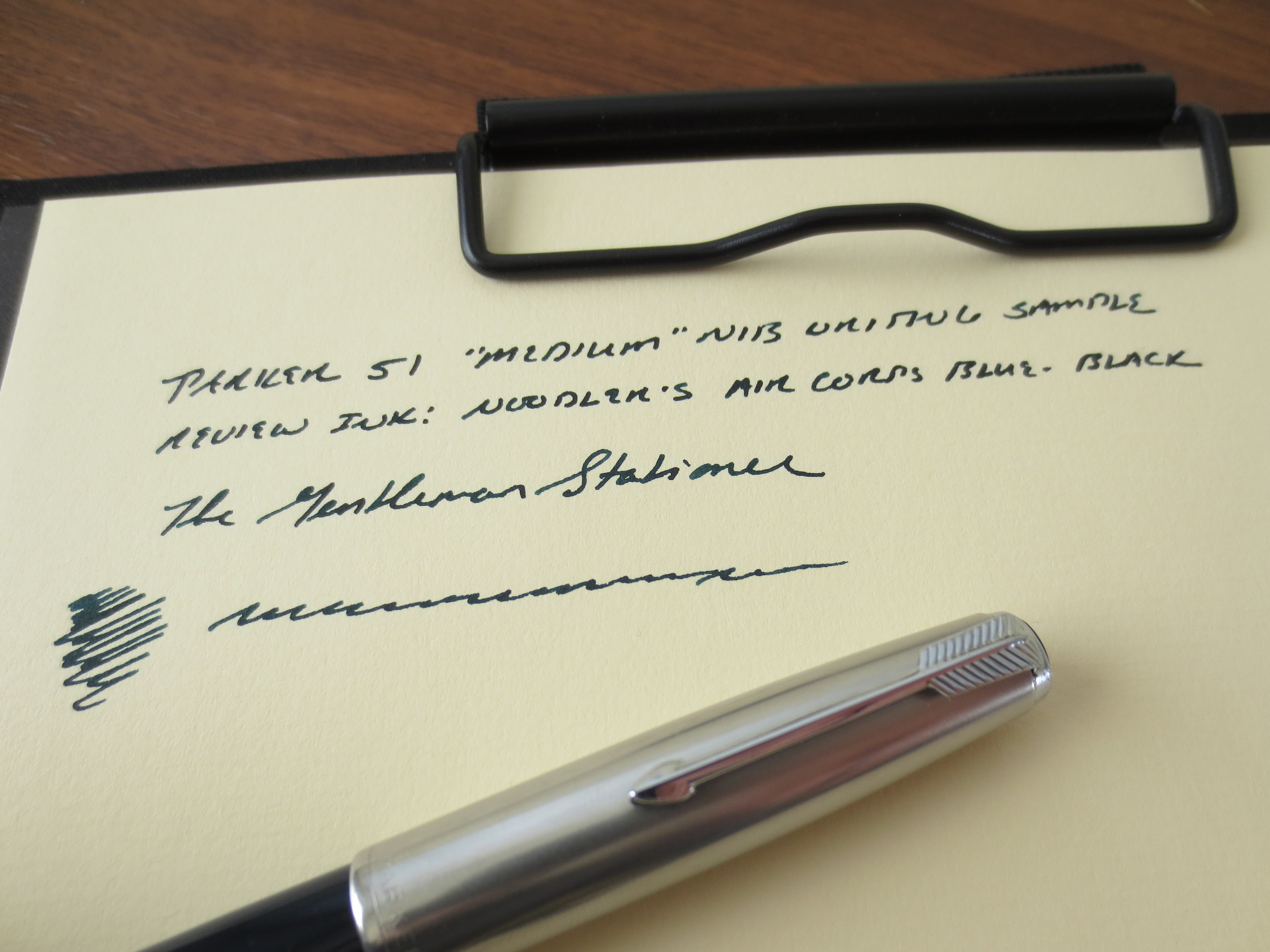It’s here! After much anticipation (and a few weather delays), yesterday I received one of the new Parker 51 fountain pens, which I first previewed in a (admittedly opinionated) post last year. I plan to review this pen in two parts: a “first impressions” post and a follow-up post after a longer period of use that will evaluate things such as build quality and reliability. While I of course will comment on how the pen compares to a vintage 51, please be advised that I ultimately plan to evaluate this pen on its own merits, as a functional writing instrument - NOT based solely on its faithfulness to the original design or from the perspective of a vintage pen collector looking for a modern replica. That’s never been my expectation for this particular pen, nor do I believe that Parker is targeting the vintage pen enthusiast market segment with this release. If that’s what you’re looking for from this pen, you will be disappointed (and in all likelihood have decided you dislike this pen already, without ever picking one up, so there’s no need to read further).
With that said, here we go!
First Impressions Out of the Box
I received a Burgundy/Chrome Parker 51 with a steel nib, which shipped from Appelboom in Parker’s standard pen box. While the presentation is nothing fancy, it’s quality packaging appropriate to the price point of this pen (approximately $109 USD MSRP / $89 USD street price). Visually, Parker has done a nice job recreating the look of the vintage 51, at least with the cap on.
Once you start to handle the pen, however, you immediately realize the various differences. Keep in mind that I have not had a chance to evaluate the more expensive gold-nib version, so I can’t speak to that particular pen. That said, the less expensive “Next Generation” Parker 51 definitely feels more akin to the “Super 21,” Parker’s lower-priced pen that sold alongside the Parker 51. While I would NOT say it feels cheap, the resin/plastic lacks the warmth of the original 51, which wasn’t unexpected since most pen companies have long since moved on from vintage materials to keep production costs down, especially at this price point. With only a day or so in-hand, there’s no way to evaluate long-term durability and the possibility of any brittleness, cracking, etc., which will require one or more follow-up reviews.
The most divisive aspect of the new design is Parker’s decision to incorporate a threaded cap in lieu of the traditional friction fit/clutch cap. While I think I prefer the vintage cap to the current design, I don’t consider it a deal breaker. (Certain well-regarded Wing Sung clones have also used threaded caps.) One concern I do have involves the combination of metal cap threads and plastic barrel threads, which already feel a bit gritty. Will metal-on-plastic wear the threads down over time? Possibly. Another thing to track.
The second most controversial design choice was Parker’s decision to go with a cartridge-converter filling system rather than a vintage-style aerometric or vacumatic filling system. I still don’t understand this critique, and have never considered it a realistic expectation for this reissue because Parker is a mass-market company that hasn’t made these filling systems in decades. While I enjoy vintage filling systems as much as anyone, cartridge-converter remains the standard for modern pen companies since the ease of use broadens its appeal, and the same mechanism can be employed across all of Parker’s various product lines. I also don’t see this particular point affecting sales of this pen. Vintage pen aficionados are going to buy vintage 51s. This pen is plainly intended for either (1) new customers or (2) those, like myself, who enjoy vintage-inspired design, and even the occasional vintage pen, but perhaps want something less “precious” to carry around with them and use on a daily basis.
Nib and Writing Experience
Finally, we get to the part that I care most about, and which pleasantly surprised me: the nib and the writing experience. One thing I love about the original Parker 51 is the ergonomics of the pen, which was designed with daily use in mind. While I don’t have a vintage 51 currently in my possession to do a direct comparison, Parker appears to have maintained the original proportions, and this pen is a very comfortable, balanced writer even with the metal cap posted on a plastic barrel. The medium stainless steel nib is also quite smooth - better, in fact, than the steel nibs on vintage Super 21s and 51 Specials (the steel-nib vintage 51s) I have had in my collection in the past. The pen wrote immediately out of the box, with no skipping or hard starting after I left it sitting overnight and picked it up again in the morning. While this seems unremarkable, it’s a common problem with many modern pens, including those that sell at much higher price points.
Honestly, I was prepared for this pen to be a scratchy, dry writer that skips and hard starts. It’s none of those things. This stainless steel medium nib writes a reliably wet, traditional medium line, so regardless of how you may feel about the “reissue” aspect, this pen does what a pen is supposed to do.
Value
I can only offer preliminary thoughts here, since one component of value is quality and durability, and this is a “first impressions” review. Based on my experience so far, though, I don’t have an issue with the $89 street price for this pen, which is comparable to similar offerings by other companies. The inevitable comparisons will be to (1) buying a vintage Parker 51 on the secondary market; and (2) buying a Parker 51 “clone” from companies such as Wing Sung or Hero. So many different factors go into personal purchasing decisions that it’s not fruitful to comment extensively on either argument. I will say, however, that I find these to be apples-to-oranges comparisons. Someone looking to purchase this particular pen is not necessarily looking to buy vintage, nor should they drop $150+ on a vintage pen unless they understand the implications of caring for and maintaining a pen that hasn’t been manufactured in more than half a century. Yes, vintage 51s are remarkably durable, but they do break and wear out, and you’re on your own in terms of manufacturer and/or dealer support. With respect to the “clones,” I’ve had great ones, and I’ve had bad ones. I will say that now that Parker has resumed making modern 51s themselves, I personally would prefer to support the owner of the actual design rather than those who arguably are misappropriating others’ intellectual property.
Overall Takeaways
After years of declining quality control and less-than-exciting designs, Parker has made a sincere effort to turn things around and release better pens with more interesting designs. The last several Parkers I have purchased have actually been nice writers. (I have a few modern Sonnets and a modern Duofold in my collection.) Continuing this trend, the steel-nib version of the “Next Generation” Parker 51 pleasantly surprised me. Frankly, while I tried to be optimistic and was happy to see Parker take a risky move in reissuing this pen, I wasn’t expecting much. At the end of the day, however, they seem to have delivered, especially relative to my expectations, and if Parker continues with the “51” line and introduces new colors, cap designs, etc., they could really have something interesting on their hands. Granted, I’m not as emotionally invested in this as some people apparently are, which allows me to evaluate the pen on its own merits. I do believe there is a market for a modern 51: The reality is that vintage Parker 51s will start to age significantly in the coming years, and while they are quality writing instruments of exceptional durability and longevity, they won’t last forever. They will become more scarce, and more expensive to both purchase and repair. While the vintage pens will always have their fans, and many will settle for nothing less than the original, that doesn’t mean that Parker shouldn’t offer another option. Stay tuned for a follow up!
Editor’s Note: I understand that this pen has generated strong opinions. That said, we need to keep things in perspective and the comments civil. I actively moderate the comments on this site, and reserve the right to reject any comments that contain obscenities, personal attacks on other commenters, and anything which, in my discretion, crosses the line from civil discourse, polite disagreement, and even gently poking fun at me and my opinions, into trolling or general nastiness. That is not the community I want to build here. Thanks for your understanding.








